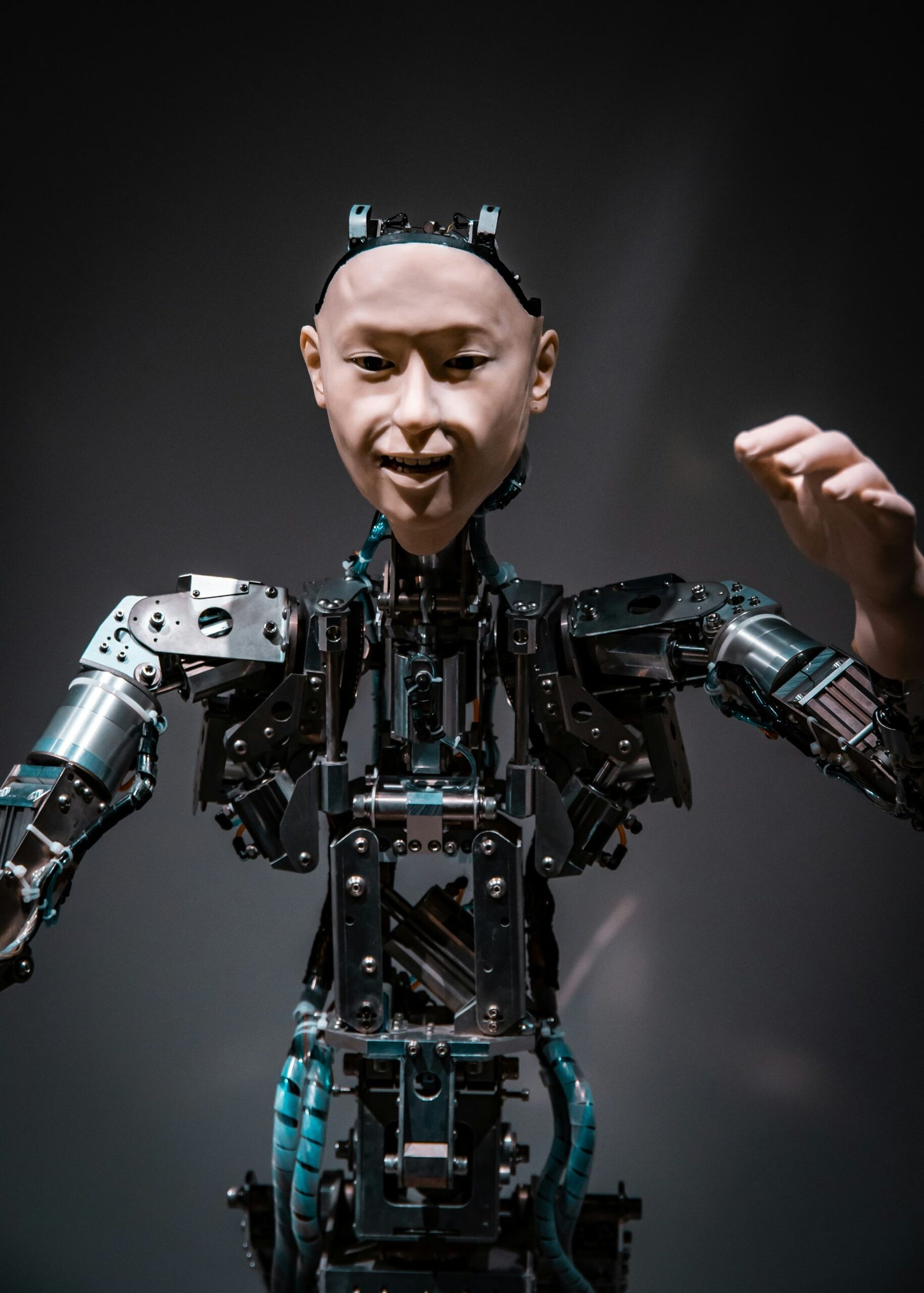Introduction to Artificial Intelligence
Artificial Intelligence (AI) refers to the simulation of human intelligence processes by machines, particularly computer systems. These processes include learning, reasoning, and self-correction, which enable AI to perform tasks that typically require human cognition. The importance of AI in contemporary technology cannot be overstated, as it permeates various sectors, from healthcare to finance, enhancing efficiency and decision-making through advanced data analytics.
The roots of AI trace back to the mid-20th century, when researchers began to explore the potential of creating machines that could mimic human thought. This exploration culminated in foundational theories and models that established AI as a legitimate field of study. Early AI systems were primarily rule-based, relying on extensive programming to perform specific tasks, which was a significant step toward achieving more complex forms of intelligence.
Over the decades, the field of artificial intelligence has evolved dramatically, fueled by advances in computational power and algorithm design. The establishment of machine learning in the late 20th century transformed AI, allowing systems to learn and adapt from massive datasets without explicit programming. This ability to learn from experience has led to the development of sophisticated applications such as natural language processing and computer vision, making AI an integral part of everyday technological experiences.
In today’s digital landscape, AI technologies are not only reshaping industries but also influencing the daily lives of individuals. From virtual assistants that streamline routine tasks to predictive algorithms that enhance customer experiences, the pervasive nature of AI underscores its relevance and potential. As we delve deeper into the historical context of artificial intelligence, particularly its origins in the 1950s, it becomes evident how these early explorations laid the groundwork for the transformative technologies we witness today.
The Dawn of AI: Pioneering Minds of the 1950s
The advent of artificial intelligence in the 1950s marked a pivotal period in technological advancement, characterized by groundbreaking ideas and exceptional intellectual contributions. Among the foremost figures of this era was Alan Turing, whose seminal work provided substantial theoretical foundations for what would later evolve into the discipline of AI. Turing introduced the concept of a “universal machine,” which could perform any computation that could be algorithmically defined, setting the stage for understanding the capabilities of machines as they pertain to complex problem solving.
In 1950, Turing published his influential paper titled “Computing Machinery and Intelligence,” where he proposed the Turing Test, a criterion for determining a machine’s ability to exhibit intelligent behavior indistinguishable from that of a human. This thought experiment not only stimulated endless discussions on machine intelligence but also sparked the imagination of researchers and innovators eager to explore the boundaries of computational power.
Alongside Turing, John McCarthy emerged as another significant figure during this nascent phase of AI development. In 1956, he organized the Dartmouth Conference, which is widely regarded as the birth of artificial intelligence as a formal field. During this conference, key ideas were exchanged regarding the mechanization of thought processes and problem-solving. McCarthy’s articulation of the notion that “every aspect of learning or any other feature of intelligence can in principle be so precisely described that a machine can be made to simulate it” continues to resonate within the AI community today.
These pioneers, along with others such as Marvin Minsky and Herbert Simon, laid the groundwork that would allow for the exploration of machine learning, neural networks, and natural language processing in subsequent decades. Their early attempts at creating machines that simulated human intelligence established the essential principles and goals of AI research, paving the way for the advancements that define modern technology.
The Turing Test and Its Implications
Proposed by Alan Turing in 1950, the Turing Test serves as a pivotal criterion for assessing whether a machine can exhibit behavior indistinguishable from that of a human. In his seminal paper, “Computing Machinery and Intelligence,” Turing laid the groundwork for evaluating artificial intelligence by suggesting a thought experiment involving a human judge interacting with both a machine and a human counterpart through text-based communication. If the judge cannot reliably distinguish between the machine and the human, the machine is said to have passed the test. This concept has since become a foundational element in discussions surrounding the philosophy of artificial intelligence.
The implications of the Turing Test extend far beyond its initial premise. It challenges the notion of intelligence itself by questioning whether behavior alone is sufficient to define a conscious entity. This perspective has fueled ongoing debates regarding the nature of machine intelligence and whether true understanding or consciousness can exist in artificial systems. Critics argue that the test does not measure true understanding or thought processes, as a machine might merely simulate conversation without genuine comprehension. However, supporters contend that behavior is a valid indicator of intelligence, suggesting that passing the Turing Test represents a significant milestone in AI development.
Moreover, the test’s influence can be seen in various fields beyond computer science, including cognitive psychology and philosophy. It prompts inquiries into what constitutes human intelligence and how similar or dissimilar it might be to that of machines. As AI technology has evolved to demonstrate increasingly sophisticated interactions, the relevance of the Turing Test remains a topic of intrigue among scholars and practitioners alike. Evaluating machines against this benchmark continues to shape the trajectory of ethical considerations and the future landscape of artificial intelligence.
The Birth of AI Programs and Languages
In the 1950s, artificial intelligence began to take its first significant steps with the introduction of pioneering programs that aimed to simulate human reasoning and problem-solving capabilities. One notable early AI program, the Logic Theorist, was developed in 1955 by Allen Newell and Herbert A. Simon. This program was designed to mimic the problem-solving skills of a human mathematician, using logical reasoning to prove mathematical theorems. The Logic Theorist’s achievement marked a foundational moment for the field, showcasing that machines could perform tasks previously thought to require human intelligence.
Another significant development during this era was the creation of the General Problem Solver (GPS), also by Newell and Simon in 1957. GPS was designed to formulate plans for solving specific types of problems and utilized a means-end analysis approach. This program illustrated how AI could potentially tackle a wide array of problems by breaking them down into manageable parts. Both the Logic Theorist and GPS laid the groundwork for future AI research, influencing methodologies that continue to be relevant today.
The establishment of programming languages tailored for artificial intelligence was a critical milestone during this period. The programming language LISP, developed by John McCarthy in 1958, became one of the foremost languages used in AI research and applications. LISP’s features, such as symbolic expression processing and the ability to manage data efficiently, made it particularly suitable for AI development. This innovation in programming language design not only facilitated the growth of AI programs but also allowed researchers to experiment with complex algorithms. In turn, these early programs and programming languages significantly contributed to the evolution of artificial intelligence, creating a foundation for the advanced technologies we see today.
The Rise and Fall of AI: The First AI Winter
The inception of artificial intelligence in the mid-20th century was marked by immense enthusiasm and optimism. Researchers made significant strides, laying the groundwork for what many envisioned as a future marked by intelligent machines capable of solving complex problems. Early models, such as the Logic Theorist and General Problem Solver, generated considerable excitement, leading to increased investment from government bodies and private sectors alike. However, the rapid advancements soon led to unrealistic expectations about what AI could achieve in the near term.
By the 1970s, these lofty predictions began to clash with reality. The limitations of early AI technologies became glaringly apparent. Researchers struggled with issues related to natural language processing, computer vision, and the complexity of human cognition. These disappointments were exacerbated by the inability of AI systems to execute tasks efficiently outside of highly specialized environments. Such challenges spurred skepticism among both investors and the public, who had been led to believe in the imminent arrival of truly autonomous machines.
The once robust funding for AI projects began to dwindle as disillusionment set in. The term “AI Winter” was coined to describe this lull, which characterized a significant reduction in interest, research funding, and academic support for artificial intelligence. Many AI laboratories faced closures, and experts in the field were forced to explore alternative research avenues or face unemployment. The period served as a sobering reminder of the disparity between the theoretical aspirations of AI and the practical limitations encountered in real-world applications.
Despite the challenges of this era, the lessons learned during the first AI Winter ultimately played a crucial role in shaping future developments. Researchers began to focus on more achievable goals and realistic expectations, setting the stage for the resurgence of AI in the decades that followed.
Revival and Rebirth: The 1980s and 1990s
The 1980s and 1990s marked a notable resurgence in artificial intelligence (AI), driven by advancements in computing technology and the introduction of innovative methodologies such as expert systems. After the setbacks of the earlier years, researchers began to explore these new approaches, breathing new life into the AI field. One of the most significant developments during this period was the emergence of expert systems, which aimed to replicate the decision-making abilities of a human expert in specific domains.
Expert systems utilized a set of rules and a knowledge base to solve particular problems within fields such as medical diagnosis, financial forecasting, and mineral exploration. The ability to codify expert knowledge and provide solutions in real-time demonstrated the practical application of AI, increasing interest from both academics and industries. These systems not only highlighted the potential of artificial intelligence but also showcased the importance of collaboration between human experts and technology.
During this time, significant advancements in computing power facilitated the development and execution of more complex algorithms. The availability of powerful hardware enabled researchers to create AI applications that could process vast amounts of data, leading to substantial improvements in performance. Concurrently, the introduction of new programming languages and tools specifically designed for AI research provided a robust platform for innovation. This technical progress laid the groundwork for more sophisticated AI models and applications.
Moreover, government and academic institutions began to allocate more resources to AI research, spurring a wave of interest and exploration. Investments in AI initiatives resulted in numerous breakthroughs, such as improved natural language processing and the development of machine learning algorithms. This period of revival set the stage for the AI advancements that would emerge in the 21st century, solidifying the discipline’s status within technological fields. In conclusion, the breakthroughs of the 1980s and 1990s played a pivotal role in the evolution of artificial intelligence, fostering an environment ripe for further development and innovation.
AI in the New Millennium: Machine Learning and Big Data
The dawn of the new millennium marked a pivotal transformation in the realm of artificial intelligence (AI), primarily driven by machine learning and the burgeoning field of big data. The convergence of these two advanced technologies caused a ripple effect across various industries, significantly enhancing the capabilities and applications of AI systems. In essence, machine learning, a subset of AI, allows computers to learn from and make predictions based on input data without being explicitly programmed for specific outcomes. This innovation paved the way for more sophisticated, adaptive AI systems that can respond to dynamic environments.
During this period, the impressive surge in the volume of data generated—often referred to as big data—has been a catalyst for these advancements. Organizations and businesses began to recognize the immense potential of harnessing vast amounts of structured and unstructured data to inform their decision-making processes. With the advent of technologies capable of processing and analyzing big data, machine learning algorithms became more effective at identifying patterns and extracting meaningful insights from complex datasets. This synergy between machine learning and big data has also encouraged the development of predictive analytics, allowing industries such as finance, healthcare, and retail to enhance customer experience and optimize operations.
The impact of these developments extends to automation, as intelligent systems capable of learning from user interactions and preferences have revolutionized sectors like customer service and content delivery. Furthermore, AI technologies such as natural language processing and computer vision have experienced significant progress, largely fueled by advancements in machine learning techniques. Together, machine learning and big data have not just transformed AI applications; they have redefined the very landscape of modern technology, laying the groundwork for future innovations and unparalleled capabilities in artificial intelligence.
Current Trends and Future Trajectory of AI
The field of Artificial Intelligence (AI) is currently experiencing rapid advancements, underpinned by innovative technologies and methodologies that are reshaping various industries. One of the most prominent trends is deep learning, a subset of machine learning that utilizes neural networks to analyze vast amounts of data. This approach has revolutionized AI applications, particularly in image and speech recognition, making them more accurate and efficient. Deep learning models have also made significant inroads into predictive analytics, enabling businesses to glean insights that were once unattainable.
Another notable trend is the development of natural language processing (NLP), which allows machines to understand, interpret, and respond to human languages in a meaningful way. NLP technologies power applications ranging from chatbots to virtual assistants, playing an essential role in enhancing user interactions across platforms. As these NLP systems become more sophisticated, their integration into everyday tasks is set to grow, transforming customer service and personal productivity.
Looking forward, the future trajectory of AI holds both promise and challenges. Optimistic viewpoints predict that AI will continue to augment human capabilities, driving innovations in healthcare, finance, and education. For instance, AI-driven diagnostic tools could lead to personalized medicine, enhancing treatment efficacy. However, cautionary viewpoints emphasize the potential risks related to ethics and job displacement. As AI systems become increasingly autonomous, concerns surrounding privacy, security, and the implications of relying on algorithms are becoming more pressing.
The landscape of AI will be influenced not only by technological advancements but also by policy and public perception. Striking a balance between encouragement of innovation and necessary regulatory frameworks will be crucial for sustainable AI growth in the coming years. The interplay of these variables will ultimately shape how AI evolves and integrates within society.
Conclusion: Reflecting on the Evolution of AI
The journey of artificial intelligence (AI) from its beginnings in the 1950s to the sophisticated technologies we see today is nothing short of remarkable. Over the decades, AI has transitioned from theoretical concepts and rudimentary algorithms to advanced systems capable of performing complex tasks that were once thought to be exclusive to human intelligence. This evolution reflects not only technological advancements but also significant shifts in how we understand and interact with intelligent systems.
In the early days, the focus was primarily on problem-solving and data manipulation. Innovations were limited by the computational capabilities of the time, yet they laid a crucial foundation for what would follow. As AI research gained momentum through the latter part of the 20th century, we witnessed the advent of machine learning and natural language processing, which would ultimately propel AI into more practical applications such as speech recognition, image analysis, and autonomous driving.
Today, AI permeates various facets of everyday life, from virtual personal assistants to recommendation algorithms that guide consumer behavior. These developments prompt critical discussions about the ethical implications of AI technologies, including privacy concerns, algorithmic bias, and the potential for job displacement. Moreover, as we continue to integrate AI deeper into our social fabric, it raises questions about accountability and the role of human oversight in AI-driven decisions.
As we reflect on the evolution of artificial intelligence, it is essential to not only appreciate how far we have come but also consider the future trajectory of these technologies. The potential for AI to enhance our capabilities and address global challenges is immense, yet it requires a balanced approach that prioritizes ethics, responsibility, and transparency. The ongoing conversation surrounding AI is crucial in shaping a future where technology uplifts society in aligned ways, securing a beneficial coexistence between humans and intelligent machines.



